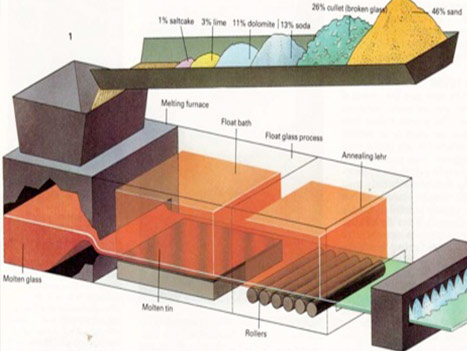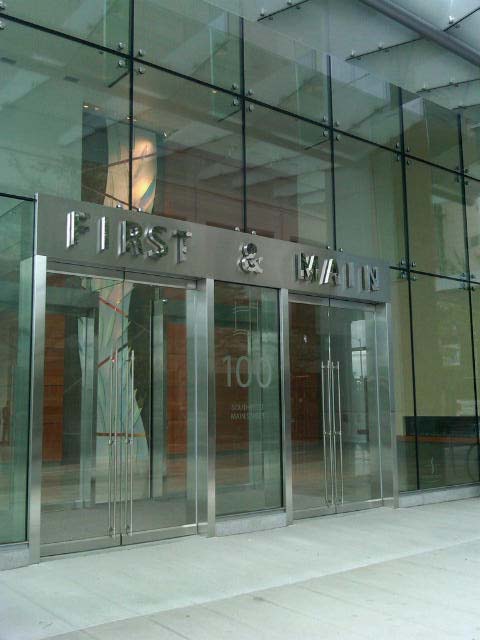Phantom Circles on Glass
From time to time a customer will see the appearance of circular marks on glass under certain climate and/or lighting conditions. Like crop circles, they mysteriously appear and disappear and many people are unsure of where they come from or how they are made.
Under certain lighting conditions (i.e. sun light at a very specific angle) or climatic conditions (rainwater running down the glass or fogged shower glass), one or more circles may become visible. They do not obstruct vision through the glass but simply show a contrast when looking at the reflectance of the glass surface when compared to the rest of the glass or as a resist area where rain water will not run down evenly but around the circular area or as a circular image on fogged shower glass.
These circular marks will usually measure anywhere from 12 “ to 3” in diameter. They can originate during the original manufacturing process or the secondary manufacturing of the finished glass. During all glass manufacturing processes, glass sheets can be moved from one location to another by the use of suction cups.
Although the suction cups are made of a very soft rubber like material, they can abrade the glass surface on a microscopic level. This can be further exaggerated if the glass is being lifted by its “tin” side (see “How Glass is Made – The Difference Between Primary and Secondary Glass Manufacturing”), an imperceptible amount of the tin residue is removed. The result is that under the circumstances described earlier, the “ghost” of one or more of the suction cups may become visible.
If the end user finds the appearance disturbing, applying a very mild abrasive such as cerium oxide onto a wet, clean rag and rubbing the effected area vigorously, will possibly remove the appearance. It is very important to carefully clean the glass area affected before applying the abrasive.
In conclusion, this is an industry wide phenomenon. It is not considered a defect since it is not constant in appearance and does not impact the performance of the glass and is not recognized by any industry standards. It is important to note that it is almost impossible duplicate this phenomenon in the industrial manufacturing environment on a cost effect basis.







